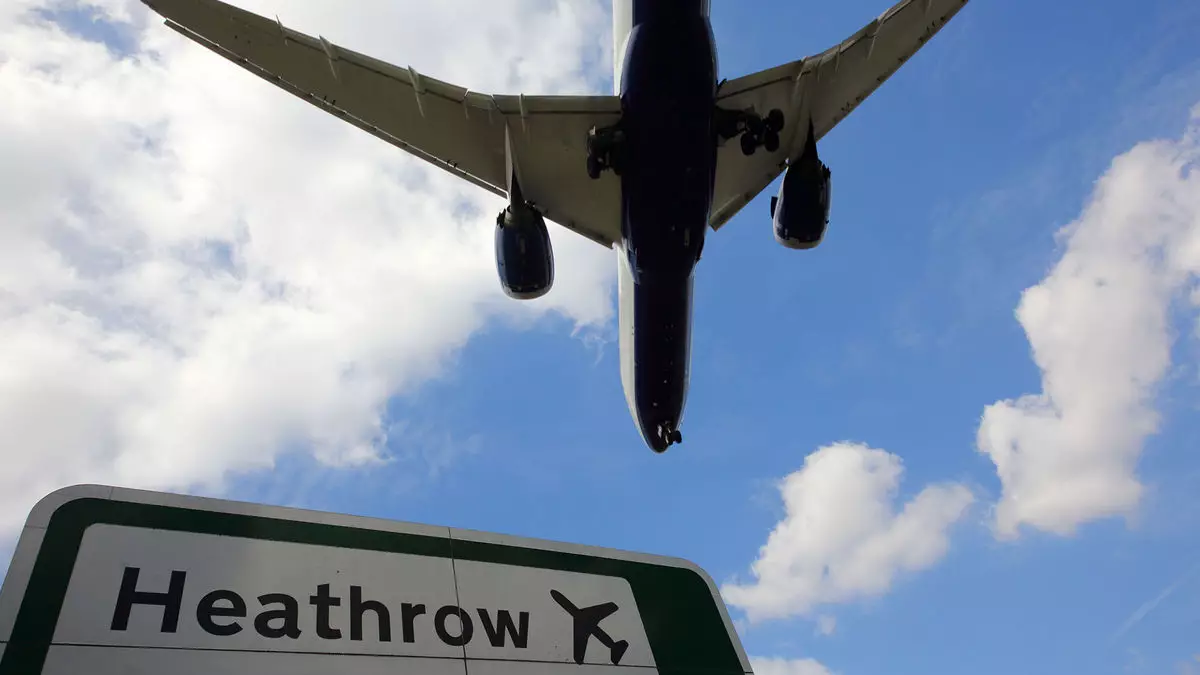London Heathrow Airport, one of the busiest air travel hubs in the world, faced a major disruption due to a fire and subsequent power outage that crippled operations for the better part of a Friday. As flights were grounded, an anxiety-laden silence blanketed the terminal. However, in a commendable show of resilience, Heathrow reopened shortly thereafter, signaling not just an operational recovery, but also the spirit of determination that defines this monumental airport.
The announcement on the Heathrow website highlighted that despite the previous chaos, operations resumed with a strategic focus on safety, emphasizing a reduced operational capacity designed to prioritize repatriation and the relocation of stranded aircraft. This measured approach not only mitigated further complications but revealed the logistical sophistication intrinsic to Heathrow’s operational management. Such decisions were not taken lightly, as the airport serves as a vital gateway for passengers connecting from various international cities.
Impact on Airlines and Passengers
The ripple effect of the airport closure was swiftly felt across the aviation industry, with repercussions that reached far beyond the airport’s borders. British Airways bore the brunt of the disruption, managing an overwhelming number of flight cancellations and delays due to its vast reliance on Heathrow for both inbound and outbound connections. Chief Executive Sean Doyle’s candid video address to passengers was both transparent and empathetic, acknowledging the chaos that his airline was grappling with. He detailed the complexity of rescheduling aircraft and crews, which is crucial for restoring normalcy but also illustrates the fragility of air travel networks.
Other airlines, while affected, were able to navigate through the turbulence with relatively lesser impacts. For instance, American Airlines and Virgin Atlantic remained optimistic about resuming near-normal operations shortly after the reopening, which speaks to their flexibility in adapting to sudden changes. The strategies that these airlines implemented to re-accommodate passengers underscore a critical lesson in operational agility within the aviation sector. Delta, one such airline, noted that it effectively diverted several flights to Amsterdam, providing alternative routes for passengers, showcasing a proactive mindset that can often make the difference in customer satisfaction.
Lessons in Crisis Management
What transpired at Heathrow serves as an insightful case study in crisis management for both airports and airlines alike. In a world where unexpected challenges are a part of the operational landscape, the airport’s response provides valuable lessons in the importance of established protocols for emergency situations. Heathrow’s capacity to communicate effectively and prioritize safety while executing a thoughtful recovery plan is a testament to their operational excellence.
Another dimension to consider is the emotional toll such disruptions take on travelers. Passengers stranded in limbo experienced uncertainty, frustration, and anxiety. The human cost of travel disruptions cannot be overlooked, and this is where the empathetic communication from airline leadership plays a pivotal role. Doyle’s request for understanding and patience highlighted the human side of aviation, reminding everyone involved that they are more than mere passengers or operators; they are individuals navigating an intricate and, at times, a precarious system.
Looking Ahead: A Testament to Aviation Resilience
As Heathrow works diligently to restore its full operational capacity, the broader implications resonate within the aviation community. The events underscore the interconnectedness of global air travel and the vulnerabilities that lie within. Yet, it is precisely in such inconvenient moments that the resilience of the aviation industry shines through. Airports and airlines must continue to innovate and prepare for potential crises, ensuring that when disruptions occur, they are met with prompt and effective responses.
The reopening of Heathrow is not merely a return to normalcy; it’s a reaffirmation of the dedication that fuels the aviation industry’s continuous evolution. There’s an innate strength found in overcoming adversity that can fortify relationships between airlines and passengers, ensuring that future generations will benefit from a more robust framework capable of withstanding similar trials.
In an interconnected world where travel is essential, the lessons learned here will serve as guiding principles. The hard-won lessons from Heathrow will foster stronger crisis management strategies, improve passenger relations, and ultimately elevate the overall travel experience, moving forward.


Leave a Reply